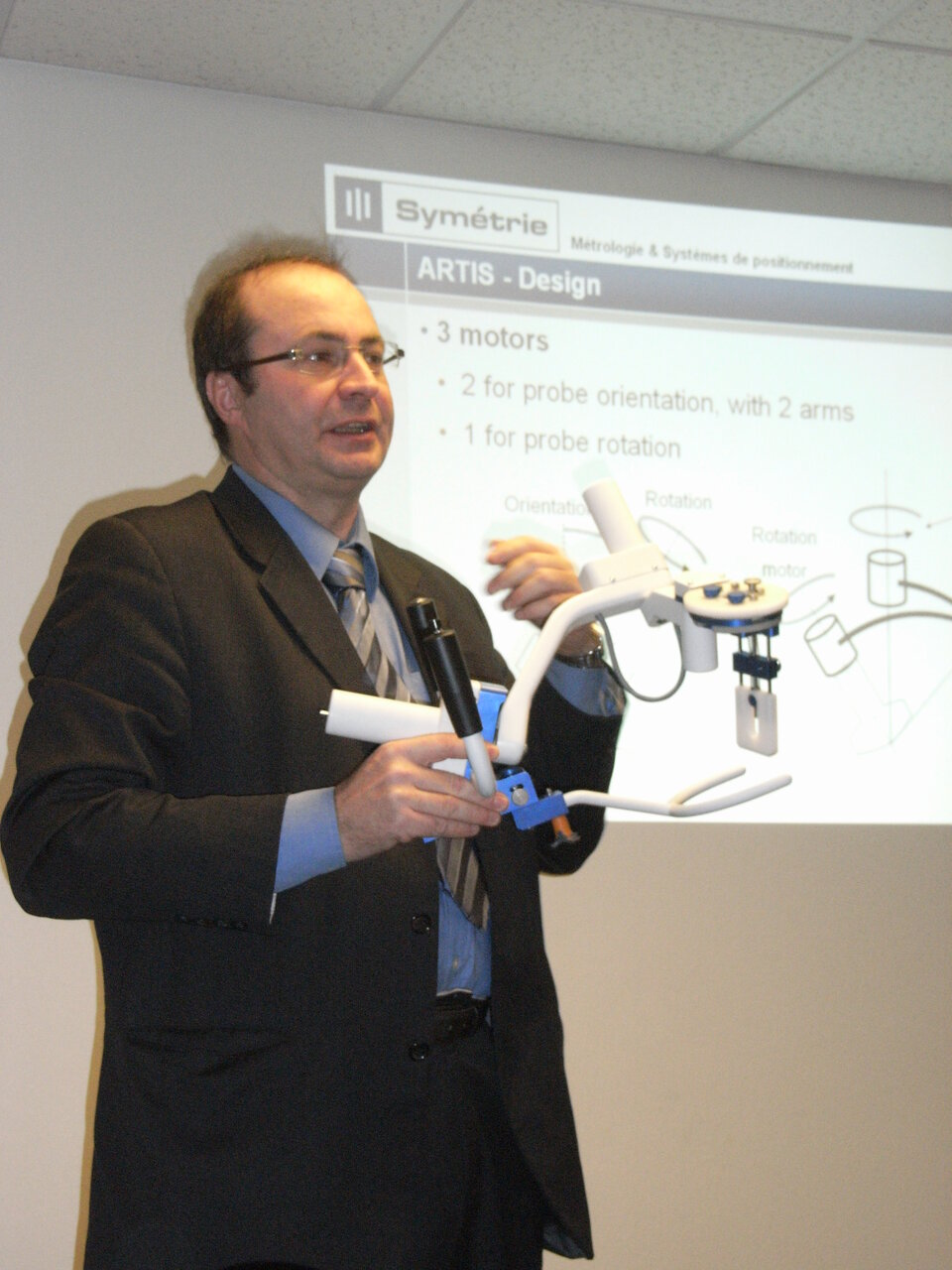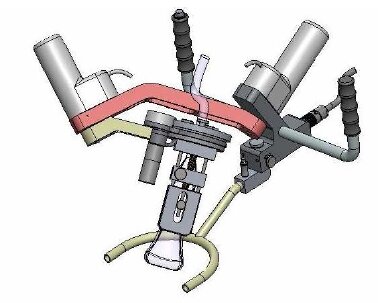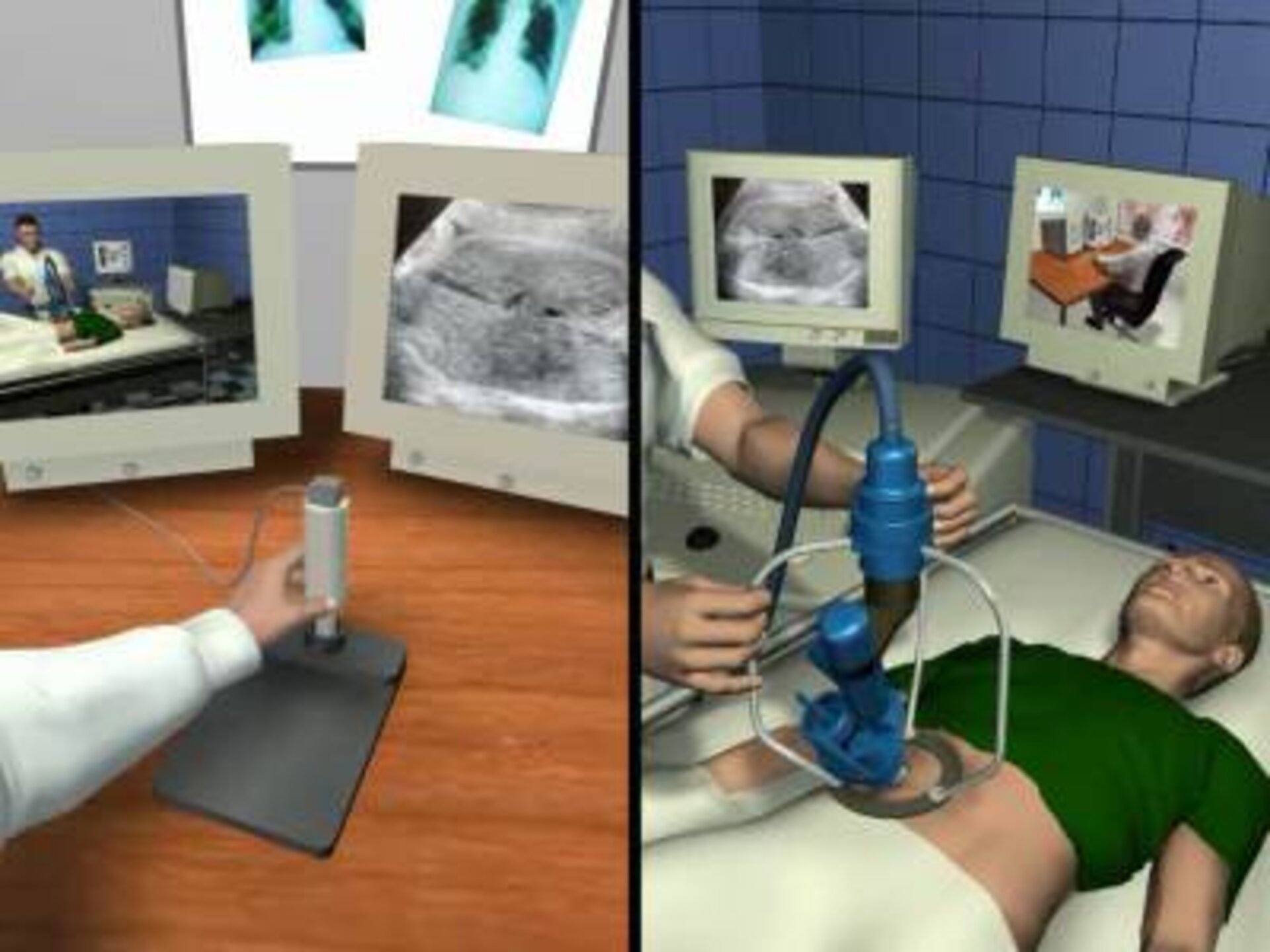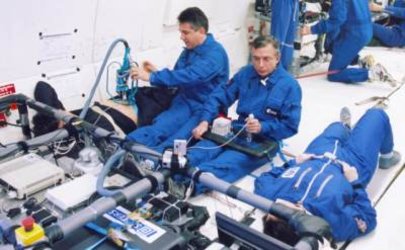Robotized tele-echography: preparation of full-scale trials
An end-to-end service of robotized tele-echography will soon be tested in real conditions within the ARTIS project (Advanced Robotic Tele-echography Integrated Service), an ESA GSP-funded activity. While the robots are getting the final upgrades, the project team is working hard on preparing the operational phase.
In case of a suspicious abdominal pain, echography is often the best medical exam to be performed in order to formulate a preliminary diagnosis. However, if this imaging modality is relatively affordable and simple to implement, it is strongly operator-dependant and medical experts able to perform echography examinations are not always available onsite. Therefore, the idea of using a tele-echography robot remotely controlled by an expert popped up in 1997 and Prof. Philippe Arbeille working at the Tours hospital developed a first prototype with ESA and CNES support.
A mature technology

The principle relies on the use of a robotic arm at the end of which the ultrasound probe is fixed. The probe is in contact with the patient’s abdomen and the probe holder is carried by an operator such as a nurse while the radiologist can remotely control the movements of the robot through a joystick. The patient site and the medical expert site can be linked either via terrestrial lines or satellite.Though the technical feasibility of the concept was already proven (several versions of the robot have been developed), the validation in real conditions of the full service chain and its sustainability still need to be demonstrated. “There is a big difference between performing a technical demonstration during 1 hour and setting up a fully operational service working over months” explains Didier Schmitt, in charge of the project at ESTEC, the technology centre of ESA.Kicked off in November 2007, the ARTIS project is managed by MEDES, the French Institute for Space Medicine and Physiology and aims at assessing the sustainability of an end-to-end tele-echography service. ARTIS is funded through the ESA General Study Programme (GSP).
Towards an operational service
“Through the ARTIS project, we are going to verify that the tele-echography service works on end to end basis” says Nathalie Ribeiro, in charge of CNES’ healthcare development programme. “We are also going to do a market survey to ensure there is a real demand for the service which must remain affordable. Our mission is also to verify that the service brings real medical benefits and cost savings for the hospital and the department of health and social security”.Close attention will be paid to the quality of the satellite link, as that is what determines the quality of the ultrasound images. Terrestrial communications are most of the time sufficient but a satellite link is vital when examining patients located in geographically isolated areas.“The bandwidth shall be sufficient to transmit ultrasound images in real-time that are satisfactory enough for radiologists to interpret them,” continues Bernard Comet, ARTIS project manager at MEDES.
First robots deployed in 2009

This robotized tele-echography service is expected to benefit secondary hospitals, which often lack of ultrasound specialists, as it will help to avoid a systematic transfer of patients to larger hospitals.“The full service is planned to be deployed at different pilot sites during the first semester of 2009 and the service will be tested during several months. Different scenarios will be studied” explains Arnaud Runge, biomedical Engineer following the project at ESA. “We are confident that the combined used of different space technologies [tele-echography robot and satellite telecommunications] will contribute to improving the quality and the access to healthcare for some European citizens”.
For more information, please contact:
Arnaud Runge
Biomedical Engineer at ESA / ARTIS project lead
Email: arnaud.runge @ esa.int
Didier Schmitt
Health expert at ESA
Email: didier.schmitt @ esa.int
Andrés Gálvez
General Studies Programme manager
Email: andres.galvez @ esa.int





